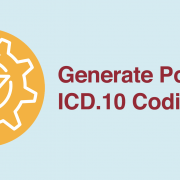7 Things You Can Do Right Now to Prepare for PDPM
-
Master PDPM Methodology
Master PDPM methodology and include all staff in job relevant PDPM subject matter trainings. Since we started PDPM training in September 2018, we have seen a trend of key departments who are being left out of the mix. This includes the Admissions teams, floor nurses, social services, medical directors, nurse practitioners, business office and medical records. Needless to say, PDPM will take the village.
Trainings should Include an intermediate level of PDPM understanding.
• ICD-10 Coding
• GG Coding
• Quick Tip: Coding of the functional status in GG should be based on usual performance and should be determined by IDT collaboration. -
Ensure Documentation Confidence
• Ensure that your nurses are comfortable with the transition from section G to section GG for functional measure coding.
• Ensure that the nurses are comfortable with documenting their skill. Since nursing has its own component, they have to be able to “own” their nursing skill and document to justify their services.
• Ensure confidence in capturing all active diagnosis. This means that you will need to (or already have) rewritten your admissions procedures and utilize preadmission forms to capture NTA items. Our PDPM analysis across the board shows a great opportunity to improve coding to accurately reflect the conditions of our patients. -
Set-up for MDS Success
Set MDS up for success. Evaluate the work flow for MDS and gain an accurate picture of job responsibilities. While there are fewer required MDS assessments under PDPM, the time not spent in assessments can be used to ensure accurate and timely coding under PDPM. Business office managers can begin conversations with managed care providers to ascertain any expected changes in reimbursement.
-
Adapt & Modify Processes
Adapt and modify your current processes to align with PDPM specific conditions and coding. In our pilot sites, HTS and our partners are adding PDPM processes to current operations to prepare and identify best practice prior to October 1st. This can be achieved alongside our current RUG system to give your team more confidence and reduce the “flipping of the PDPM switch” on midnight of September 30th.
Examples include:
Changes to your weekly Medicare meeting forms
• Changes to your admission processes Begin a 5-day assessment meeting for all Med A patients with each department contributing their PDPM-related information
• Establish the IDT approach to selecting the primary diagnosis prior to the skilled stay.
• Use the CMS Clinical Category Mapping “Return to Provider Codes” which will be rejected beginning October 1st -
Restorative Nursing
Restorative nursing for your skilled patients may be a positive adjunct to therapy services under PDPM.
Under PDPM, providing two restorative programs for the nursing groups Reduced Physical Function and Behavioral or Cognitive Symptoms will result in an increased nursing CMI.
-
Talk with Your Docs
You have from now until October 1st to work with your hospitals and physicians to ensure efficient data collection for the 5-day MDS and optimal information for coding accuracy. This may include a review of how you obtain your data, what EHR is being used and if they are willing to build reports or have the ability to add reports to their standard transfer paperwork. It may be necessary to call a meeting about PDPM to your referral networks and educate doctors and hospitals on the importance of sending this key information. This includes: providing timely discharge summaries, operative reporting, ICD-10 codes, accurate active diagnosis and any specialty information.
-
Know Your Software
Whether you are using PCC, Matrix, Vision, etc. it is important to know what new functionalities will be available under PDPM.
• Know what current PDPM tools and reports are available for you to take utilize now.
• Get involved in any PDPM workgroups offered by the software provider to offer feedback and suggestions.
• Take advantage of any trainings, modules or alerts of new functions.











Leave a Reply
Want to join the discussion?Feel free to contribute!